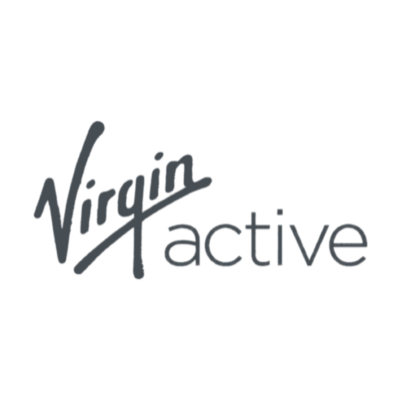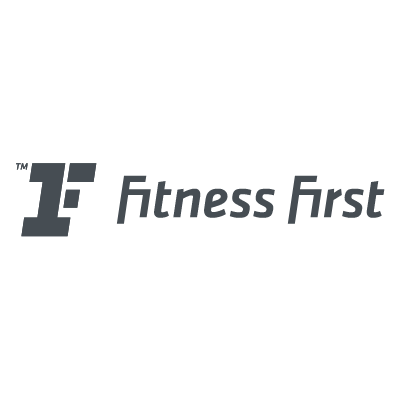5 Mistakes to Avoid when setting up your Personal Training Business

Are you struggling with where to start with the setting up of your personal training business?
On top of perfecting your training programs, you’ve got insurance to pay for, business admin, and a marketing strategy to complete. With so many things to think about, it’s no surprise mistakes happen.
But the harsh truth is that over 50% of personal trainers shut down within the first year. And a huge proportion of these can be from missing out on the vital fundamentals of a business start-up. Imagine the disappointment in your business shutting down despite the services being exceptional…
That’s why it’s so important we can get the worst mistakes avoided at all costs.
If you’ve recently finished your pt course, now’s the time to turn that knowledge into a solid business plan and avoid the common mistakes that catch new trainers out.
And that’s where we come in!
With a few easy methods we’ve set out in this article, you’ll understand the most crucial elements to remember and mistakes to avoid. You’ll learn the importance of making your business standout early on and utilising easy digital strategies to attract your desired clientele.
In just a short read, you’ll have all the information you need to ensure you avoid the worst mistakes to make when setting up your personal training business...
Mistake1: Skipping business fundamentals
Underestimating the importance of a business plan
A solid business plan is your roadmap. It outlines your vision, sets clear goals, and helps you develop them into strategies. According to industry insights, business planning has been shown to help businesses grow 30 percent faster than organisations without them.
A well-crafted business plan includes key components such as market analysis, competitive analysis, operational plan, and financial projections. You might think this is just for corporate careers, but business plans are essential for every personal trainer too.
Within it, you can create your vision and goals. Are you aiming for a certain number of clients, a specific income, or perhaps the ability to run your business online? Write these goals down and break them into short-term and long-term objectives. This will give you direction and a sense of purpose.
Your business plan should also include a comprehensive budget. Account for expenses like insurance, equipment, marketing, and ongoing education. Understanding your financial landscape will help you make informed decisions and avoid potential pitfalls down the line.
Neglecting legal requirements
Though it’s not the most exciting, legal compliance is non-negotiable. Failing to understand insurance needs, registration requirements, and local regulations can lead to costly consequences. Having appropriate liability insurance protects you against claims arising from injuries during training sessions.
Look into obtaining professional indemnity insurance, which can protect you in case a client sues for damages related to your services. The Health and Safety Executive (HSE) provides resources to ensure you meet local requirements. Familiarise yourself with these regulations to safeguard your business from legal issues.
Depending on your location, you may need to register your business as a sole trader, limited company, or partnership. Each structure has its pros and cons, particularly in terms of taxation and liability. Consult with a financial advisor to determine the best option for you.
Mistake 2: Ignoring your target market
Defining your ideal client
Identifying your target audience is crucial for tailoring your services effectively. Consider factors like age, fitness goals, and preferences. Knowing your ideal client allows you to craft services and marketing strategies that resonate with them. This will also have the knock-on effect on you to keep on track with the right training methods for your specific clientele.
Dig deeper into who your clients are. Are they primarily young athletes, busy professionals, or older adults looking to maintain mobility? Psychographics—such as values, interests, and lifestyle—also play a significant role in shaping your services and all these categories will ultimately determine how you present your business to the world.
Use surveys, social media polls, or even informal conversations to gather insights on what potential clients seek. This research will enable you to adapt your offerings and attract clients who align with your training philosophy.
Tailoring services to meet client needs
Once you've defined your target market, adjust your offerings accordingly. For example, if your audience consists primarily of older adults, focus on functional training and flexibility. Conversely, if you're targeting athletes, incorporate performance enhancement techniques. This targeted approach not only attracts clients but also positions you as an expert in their eyes.
Develop specific training programmes tailored to different groups. This could include senior fitness classes, sports-specific training, or weight loss boot camps. Offering a range of services will attract diverse clients and enhance your credibility.
Regularly solicit feedback from your clients to refine your programmes. Especially in the early days of your business, this will help you understand what works, what doesn’t, and how you can better serve your clientele.
Mistake 3: Poor marketing strategies
Relying solely on word of mouth
While word of mouth is valuable, it shouldn’t be your only marketing strategy. In today's digital landscape, having a strong online presence is essential. With over 5 billion users on the internet just last year, it would be a complete injustice to your business to neglect online methods of communication.
Your website is your online business card. It should clearly convey your services, credentials, and contact information. Include client testimonials and success stories to build credibility. Consider incorporating a blog to share fitness tips and industry insights, which can help with search engine optimization (SEO).
Social media platforms like Instagram, Facebook, and TikTok are invaluable for showcasing your expertise and attracting clients. Post regularly, share client transformations, and engage with your audience. Educational content, such as workout tips or nutrition advice, can position you as a knowledgeable resource.
Failing to network with other professionals
Building relationships with other fitness professionals can open doors to new opportunities. Collaborate with local gyms, wellness centres, or sports clubs to reach a wider audience. Networking not only enhances your visibility but can also lead to referral opportunities.
- Collaborating for mutual benefit: Consider partnering with nutritionists, physiotherapists, or even local businesses to create referral networks. Joint events or workshops can introduce you to new clients while providing added value to existing ones.
- Attending industry events: Attend fitness expos, conferences, and local meetups. Engaging with other professionals can provide insights into industry trends and best practices, as well as foster potential partnerships.
Mistake 4: Inadequate client communication
Overlooking the importance of rapport
Building strong relationships with your clients is key to retention and success. Taking the time to get to know your clients will foster loyalty and improve their overall experience and so your business’ reputation.
- Active listening: Pay close attention to your clients’ concerns, goals, and feedback. Show empathy and understanding, which can create a supportive training environment.
- Regular check-ins: Schedule periodic check-ins to discuss progress, reassess goals, and address any issues. This proactive approach demonstrates your commitment to their success.
Not setting clear expectations
Clear expectations prevent misunderstandings and set the stage for success. Discuss goals, training frequency, and progress tracking right from the start. This clarity not only enhances the client experience but also solidifies your role as a knowledgeable and reliable professional.
- Goal-setting sessions: At the outset, work with your clients to set realistic and achievable goals. Break these down into smaller milestones and regularly review their progress. This structured approach not only keeps clients motivated but also shows your dedication to their success.
- Documenting agreements: Put your terms of service, cancellation policies, and other important details in writing. This transparency builds trust and ensures everyone is on the same page.
Mistake 5: Not continuing education
Stagnating in your knowledge
The fitness industry is constantly evolving, and staying updated is vital. Committing to lifelong learning can also boost your confidence and expertise.
Look for specialised certifications that can enhance your skill set, such as sports nutrition, corrective exercise, or specialised training for specific populations. These qualifications can make you more marketable and allow you to offer diverse services.
Being aware of emerging trends allows you to adapt your offerings and remain relevant. For instance, the rise of online training and virtual coaching has changed how clients engage with fitness. By embracing these trends, you improve your service delivery and position yourself as a forward-thinking trainer.
Embracing technology
Incorporating technology into your training can also set you apart. Consider using apps or software for tracking progress, scheduling sessions, and communicating with clients. These tools can streamline your operations and enhance the client experience.
Offering virtual sessions can attract clients who prefer training from home or those who may not have access to a local trainer. This flexibility can significantly expand your client base.
Engage with online fitness communities or 1245forums to learn from peers, share experiences, and access valuable resources. This network can provide ongoing support and motivation as you grow your business.


























